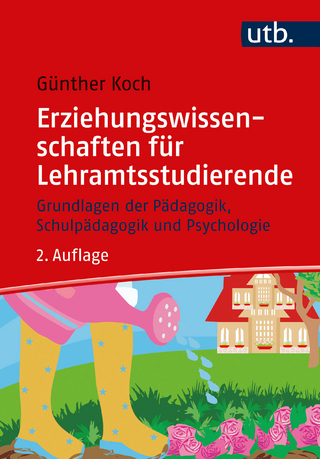
What's the Right Thing to Do?
Rowman & Littlefield (Verlag)
978-1-4758-4856-4 (ISBN)
Making choices is one of the more pervasive acts of life. Almost every action we take demands that choices be made. Knowing how to choose wisely, to choose after reflection, to be aware of what motivates that choice, to see the consequences of that choice on others enables us to live healthier, more productive and more responsible lives.
We now live in a world in which our traditional moral exemplars have been less than honorable in their public behavior. With fewer “heroes” and flawed role models, how are children to come to an understanding of what’s right, what’s good, decent and socially responsible? “Do as I say, not as I do” is hardly a viable tenet to guide children’s choices.
This book offers important tools for carrying out effective strategies that build caring environments in the classroom and home; for teaching children to weigh decisions in the face of potential consequences, examine rationales for their choices, and study the effects of their choices on others, i.e., to think more carefully about ethical problems, in the presence of the moral freedom to determine for themselves what it means to lead a good and virtuous life.
Selma Wassermann is a professor emerita in the Faculty of Education at Simon Fraser University. Her books include An Introduction to Case Method Teaching: A Guide to the Galaxy (1994), This Teaching Life (2004), Teaching for Thinking Today: Theory, Strategies and Activities for the K-8 Classroom (2017), Teaching in the Age of Disinformation: Don’t Confuse Me with the Data, My Mind is Made Up (2017).
Preface
Acknowledgments
Introduction
Chapter 1- It’s a Dilemma
Theoretical Foundations of Moral Behavior
Chapter 2- Making Sense of a Complex World: What’s the Right Thing to Do?
What Can Teachers and Parents Do?
Chapter 3- Children as Decision Makers
Thinking and Deciding
Some Caveats
Freedom to Choose and Empowerment
Chapter 4- Introduction to the World of Moral Dilemmas
It’s Complicated
Adult-Child Discussions About Moral Issues
The Value of Small Group Work
Chapter 5- Stories, Mini-Cases, Books, Films and Classroom Incidents
What’s a Case?
Twenty-two Mini-Cases
Inviting Children’s Stories About Their Own Dilemmas
Children’s Books and Stories
Films
Chapter 6- Putting Moral Behavior into Action
Community Projects
Extracting Meaning from Experience
Journals
Chapter 7- Discussion Strategies to Examine Moral Issues
Learning Discussion Skills by Observing the “How” in Action
The Interactive Dialogue
The Teacher/Parent in the Process
Non-defensive Awareness of Self
Chapter 8- Even Children Can Make a Difference
Children Who Make a Difference
Bibliography
About the Author
| Erscheinungsdatum | 03.08.2019 |
|---|---|
| Verlagsort | Lanham, MD |
| Sprache | englisch |
| Maße | 162 x 228 mm |
| Gewicht | 349 g |
| Themenwelt | Sozialwissenschaften ► Pädagogik ► Allgemeines / Lexika |
| Sozialwissenschaften ► Pädagogik ► Bildungstheorie | |
| Sozialwissenschaften ► Pädagogik ► Vorschulpädagogik | |
| ISBN-10 | 1-4758-4856-0 / 1475848560 |
| ISBN-13 | 978-1-4758-4856-4 / 9781475848564 |
| Zustand | Neuware |
| Haben Sie eine Frage zum Produkt? |
aus dem Bereich


